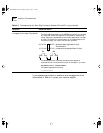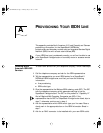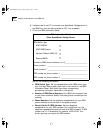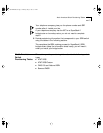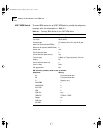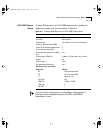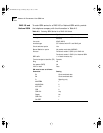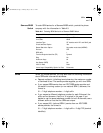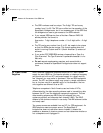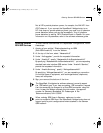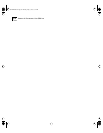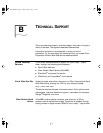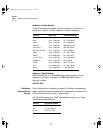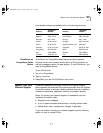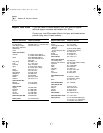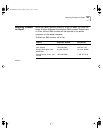
A-8 APPENDIX A: PROVISIONING YOUR ISDN LINE
■ The SPID numbers must be unique. The 2-digit TID can be any
number from 0 to 62. The TID has no effect on the operation of the
SuperStack II bridge/router, but it is a necessary part of the SPID that
the bridge/router uses to gain access to the ISDN network.
■ If you request ISDN service from a Northern Telecom DMS-100
service provider, the format is:
Area code + 7-digit telephone number + 0 to 8 digit suffix + 2 digit
TID.
■ The TID can be any number from 0 to 62, but needs to be unique
so that the SPIDs are also unique. This format applies when the
switch is running Custom and NI-1 (North American 3) versions of
software.
■ If you order AT&T 5ESS ISDN services, choose either a Type A or
Type E terminal. The Type E terminal is preferable because it is for
data only.
■ Do not request supplementary services, such as autohold or
conference, because a SuperStack II bridge/router does not support
them.
NT1s and Power
Supplies
North American telephone companies require an NT1 and a power
supply for every ISDN line. Your service provider or telephone company
can provide you with an NT1 and power supply for a small monthly
fee. However, you may prefer to purchase it from an ISDN equipment
vendor. The NT1 and power supply may come in a single, standalone
box or the two may be in separate units. In this discussion, the two
units together are referred to as an NT1.
Telephone companies in North America use two kinds of NT1s,
differentiated by the data encoding scheme used in transmitting data
between the NT1 and the telephone company’s equipment. The two
data encoding schemes are 2B1Q (two bits mapped into one
quaternary symbol) and alternate mark inversion (AMI). The 2B1Q
scheme is the dominant method in use today. The AMI scheme is older
and rarely used.
Two power sources are available from an NT1 for CPE equipment. An
ISDN telephone uses one power source. The SuperStack II
bridge/router does not use either source. Instead, it detects the
presence or absence of phantom power and can determine whether or
not a telephone cord is plugged in.
SS2TRHWBook Page 8 Monday, May 5, 1997 3:11 PM



